-
 Bitcoin
Bitcoin $113400
-0.78% -
 Ethereum
Ethereum $3572
-2.11% -
 XRP
XRP $2.908
-4.07% -
 Tether USDt
Tether USDt $0.9999
0.00% -
 BNB
BNB $751.0
-1.27% -
 Solana
Solana $162.3
-3.12% -
 USDC
USDC $0.9998
-0.01% -
 TRON
TRON $0.3319
-0.54% -
 Dogecoin
Dogecoin $0.1963
-4.68% -
 Cardano
Cardano $0.7128
-4.47% -
 Hyperliquid
Hyperliquid $37.14
-2.57% -
 Stellar
Stellar $0.3858
-4.90% -
 Sui
Sui $3.341
-3.86% -
 Bitcoin Cash
Bitcoin Cash $554.6
-1.94% -
 Chainlink
Chainlink $16.10
-3.77% -
 Hedera
Hedera $0.2338
-4.24% -
 Ethena USDe
Ethena USDe $1.001
0.00% -
 Avalanche
Avalanche $21.66
-4.72% -
 Litecoin
Litecoin $117.8
-2.92% -
 UNUS SED LEO
UNUS SED LEO $9.002
0.08% -
 Toncoin
Toncoin $3.156
-6.13% -
 Shiba Inu
Shiba Inu $0.00001192
-3.09% -
 Uniswap
Uniswap $9.411
-3.25% -
 Polkadot
Polkadot $3.562
-2.50% -
 Dai
Dai $0.9999
0.00% -
 Monero
Monero $288.9
-4.05% -
 Bitget Token
Bitget Token $4.274
-1.88% -
 Cronos
Cronos $0.1362
-1.79% -
 Pepe
Pepe $0.0...09999
-4.55% -
 Aave
Aave $252.7
-2.97%
What is Byzantine Fault Tolerance (BFT) and its significance?
BFT ensures blockchain networks remain secure and operational despite faulty or malicious nodes, crucial for maintaining transaction integrity in cryptocurrencies.
Apr 10, 2025 at 02:00 am
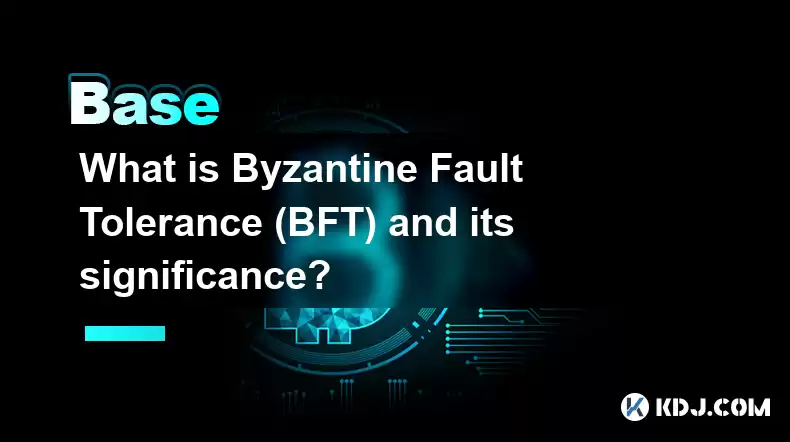
Byzantine Fault Tolerance (BFT) is a crucial concept in the realm of distributed computing and blockchain technology. BFT refers to the ability of a system to continue operating correctly even if some of its components fail or act maliciously. This concept is named after the "Byzantine Generals' Problem," a scenario where multiple generals must coordinate their actions to attack or retreat, but some generals might be traitors. In the context of cryptocurrencies, BFT ensures that a network can reach consensus and maintain integrity despite the presence of faulty or malicious nodes.
The Origins of Byzantine Fault Tolerance
The concept of Byzantine Fault Tolerance originated from a seminal paper published in 1982 by Leslie Lamport, Robert Shostak, and Marshall Pease. Titled "The Byzantine Generals Problem," the paper introduced the challenge of achieving consensus in a distributed system where some nodes might be unreliable or malicious. This problem is particularly relevant to blockchain networks, where nodes must agree on the state of the ledger despite potential attacks or failures. The paper laid the groundwork for subsequent research and development in fault-tolerant systems, which has been instrumental in the design of modern cryptocurrencies.
How BFT Works in Blockchain Networks
In blockchain networks, BFT mechanisms are employed to ensure that all nodes agree on the state of the ledger. A typical BFT algorithm involves multiple rounds of communication among nodes to reach a consensus. For instance, in a network with n nodes, if up to f nodes can fail or act maliciously, the system can still achieve consensus as long as n > 3f. This means that at least two-thirds of the nodes must be honest for the system to function correctly. BFT algorithms like Practical Byzantine Fault Tolerance (PBFT) and Tendermint are commonly used in blockchain systems to achieve this level of fault tolerance.
Significance of BFT in Cryptocurrencies
The significance of BFT in cryptocurrencies cannot be overstated. BFT ensures the security and reliability of blockchain networks, which are foundational to the operation of cryptocurrencies. Without BFT, a network would be vulnerable to attacks where malicious actors could manipulate the ledger, leading to double-spending or other fraudulent activities. By implementing BFT, cryptocurrencies can maintain the integrity of their transactions and ensure that the network remains operational even in the face of adversarial conditions.
Examples of BFT in Cryptocurrency Networks
Several cryptocurrency networks have implemented BFT mechanisms to enhance their security and reliability. For example, Hyperledger Fabric uses PBFT to achieve consensus among its nodes. This allows the network to process transactions quickly and securely, making it suitable for enterprise applications. Another example is the Cosmos network, which uses the Tendermint BFT consensus algorithm to enable interoperability between different blockchain networks. These implementations demonstrate the practical application of BFT in real-world cryptocurrency systems.
Challenges and Limitations of BFT
While BFT is a powerful tool for ensuring the reliability of distributed systems, it is not without its challenges and limitations. One of the main challenges is the scalability of BFT algorithms. As the number of nodes in a network increases, the communication overhead required to achieve consensus can become prohibitive. This can lead to slower transaction processing times and higher resource consumption. Additionally, BFT algorithms can be complex to implement and maintain, requiring significant expertise and resources. Despite these challenges, ongoing research and development continue to improve the efficiency and scalability of BFT mechanisms.
BFT vs. Other Consensus Mechanisms
BFT is just one of several consensus mechanisms used in blockchain networks. Other popular mechanisms include Proof of Work (PoW) and Proof of Stake (PoS). PoW, used by Bitcoin, requires nodes to solve complex mathematical puzzles to validate transactions, while PoS, used by Ethereum 2.0, selects validators based on the number of coins they hold. Each of these mechanisms has its strengths and weaknesses. BFT is particularly advantageous in scenarios where high transaction throughput and low latency are required, as it does not rely on energy-intensive mining processes like PoW. However, BFT may be less suitable for public, permissionless networks due to its complexity and resource requirements.
Implementing BFT in a Cryptocurrency Network
Implementing BFT in a cryptocurrency network involves several steps and considerations. Here is a detailed guide on how to implement BFT:
Choose a BFT Algorithm: Select a suitable BFT algorithm based on the specific requirements of your network. Common choices include PBFT, Tendermint, and HotStuff.
Design the Network Architecture: Plan the architecture of your network, including the number of nodes and their roles. Ensure that the network can tolerate the expected number of faulty or malicious nodes.
Implement the BFT Protocol: Develop the software that implements the chosen BFT algorithm. This involves writing code for the consensus mechanism, including the communication protocols and validation logic.
Test the Implementation: Thoroughly test the BFT implementation to ensure it functions correctly under various conditions. This includes testing with different numbers of nodes and simulating failures or malicious behavior.
Deploy and Monitor: Deploy the BFT-enabled network and continuously monitor its performance. Be prepared to make adjustments and optimizations as needed to maintain the network's reliability and efficiency.
BFT and Network Security
BFT plays a critical role in enhancing the security of cryptocurrency networks. By ensuring that a network can reach consensus despite the presence of faulty or malicious nodes, BFT helps prevent attacks such as double-spending and 51% attacks. In a double-spending attack, a malicious actor attempts to spend the same cryptocurrency twice, while a 51% attack involves controlling more than half of the network's mining power to manipulate transactions. BFT mechanisms make these attacks much more difficult to execute, thereby increasing the overall security of the network.
BFT in Permissioned vs. Permissionless Networks
The application of BFT can vary depending on whether a network is permissioned or permissionless. In permissioned networks, where participants are known and trusted, BFT can be more easily implemented and managed. These networks often use BFT algorithms like PBFT to achieve high transaction throughput and low latency. In contrast, permissionless networks, where anyone can join and participate, face greater challenges in implementing BFT due to the potential for a higher number of malicious actors. In such cases, alternative consensus mechanisms like PoW or PoS may be more suitable, although some permissionless networks, like Algorand, have successfully implemented BFT-like mechanisms.
Frequently Asked Questions
Q: Can BFT be used in conjunction with other consensus mechanisms?
A: Yes, BFT can be used in conjunction with other consensus mechanisms to enhance the security and efficiency of a network. For example, some hybrid systems combine BFT with PoS to leverage the strengths of both mechanisms.
Q: How does BFT impact the energy consumption of a blockchain network?
A: BFT typically requires less energy than PoW because it does not involve energy-intensive mining processes. However, the energy consumption can still be significant due to the communication overhead required for consensus.
Q: Are there any alternatives to BFT for achieving fault tolerance in blockchain networks?
A: Yes, alternatives to BFT include Crash Fault Tolerance (CFT) and various forms of probabilistic consensus mechanisms. CFT is simpler to implement but less robust against malicious behavior, while probabilistic mechanisms like PoW and PoS offer different trade-offs in terms of security and efficiency.
Q: How can the performance of a BFT-enabled network be optimized?
A: Performance optimization can be achieved through several strategies, including improving the efficiency of the BFT algorithm, reducing communication overhead, and optimizing the network architecture. Regular monitoring and fine-tuning are essential to maintain optimal performance.
Disclaimer:info@kdj.com
The information provided is not trading advice. kdj.com does not assume any responsibility for any investments made based on the information provided in this article. Cryptocurrencies are highly volatile and it is highly recommended that you invest with caution after thorough research!
If you believe that the content used on this website infringes your copyright, please contact us immediately (info@kdj.com) and we will delete it promptly.
- Coinbase, Financing, and the Crypto Market: Navigating Choppy Waters in NYC Style
- 2025-08-06 12:50:11
- Bitcoin in Indonesia: Crypto Education and Economic Strategy
- 2025-08-06 12:50:11
- DeriW Mainnet: Zero Gas Fees Revolutionize On-Chain Derivatives Trading
- 2025-08-06 10:30:11
- IOTA, Cloud Mining, and Eco-Friendly Crypto: A New York Investor's Take
- 2025-08-06 10:30:11
- Kaspa (KAS) Price Prediction: August 6 - Will It Break Free?
- 2025-08-06 10:50:12
- Pension Funds, Bitcoin ETFs, and Exposure: A New Era of Institutional Crypto Adoption
- 2025-08-06 12:55:12
Related knowledge
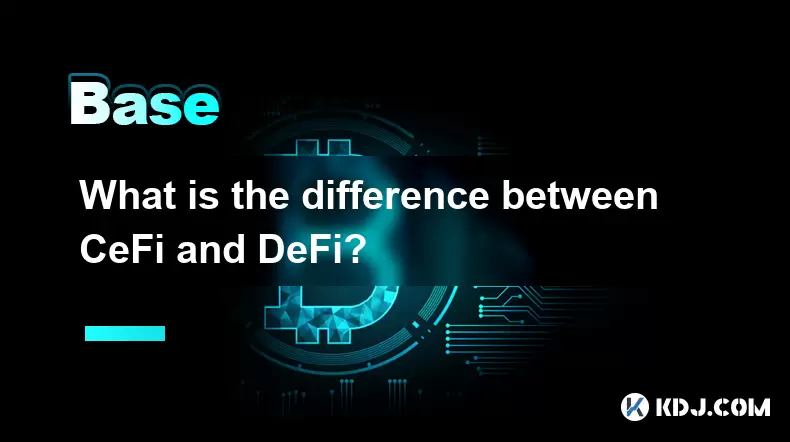
What is the difference between CeFi and DeFi?
Jul 22,2025 at 12:28am
Understanding CeFi and DeFiIn the world of cryptocurrency, CeFi (Centralized Finance) and DeFi (Decentralized Finance) represent two distinct financia...
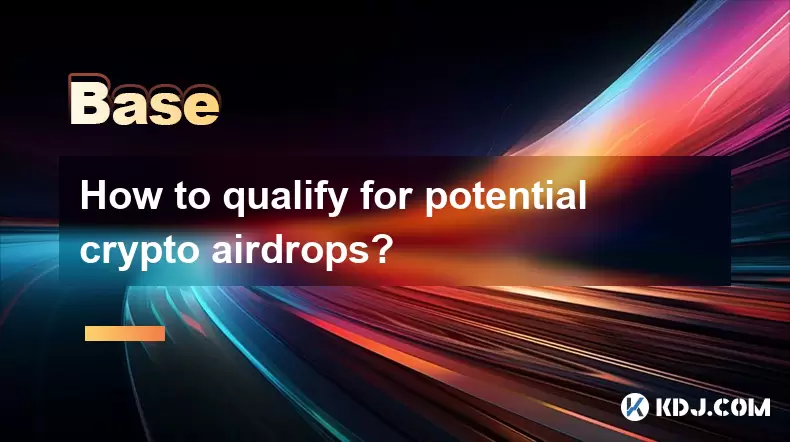
How to qualify for potential crypto airdrops?
Jul 23,2025 at 06:49am
Understanding What Crypto Airdrops AreCrypto airdrops refer to the distribution of free tokens or coins to a large number of wallet addresses, often u...
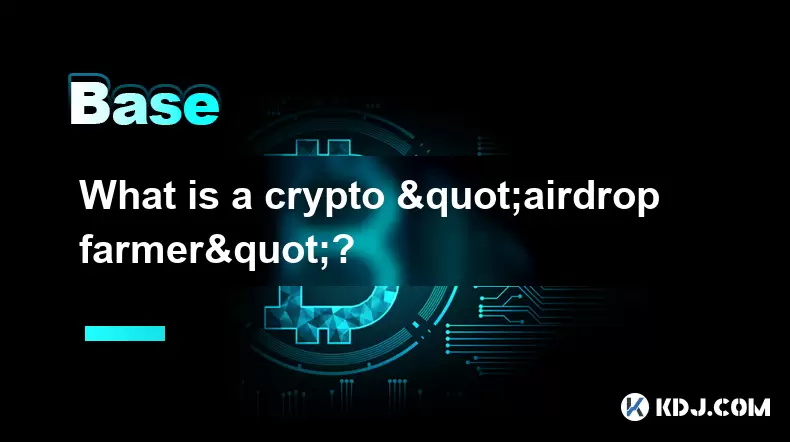
What is a crypto "airdrop farmer"?
Jul 24,2025 at 10:22pm
Understanding the Role of a Crypto 'Airdrop Farmer'A crypto 'airdrop farmer' refers to an individual who actively participates in cryptocurrency airdr...
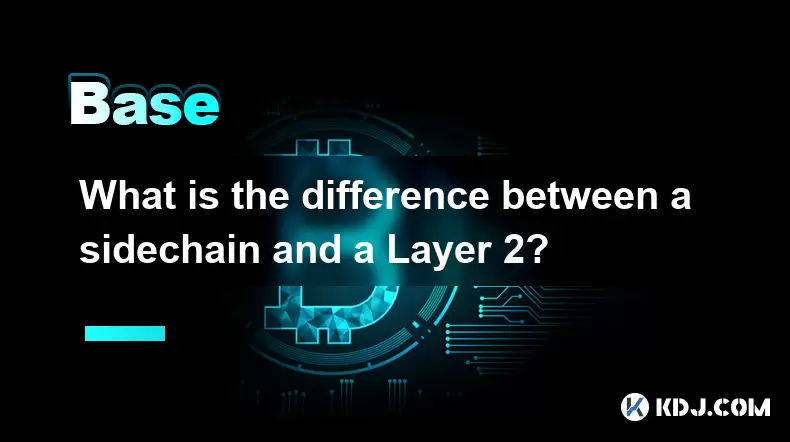
What is the difference between a sidechain and a Layer 2?
Jul 20,2025 at 11:35pm
Understanding the Concept of SidechainsA sidechain is a separate blockchain that runs parallel to the main blockchain, typically the mainnet of a cryp...
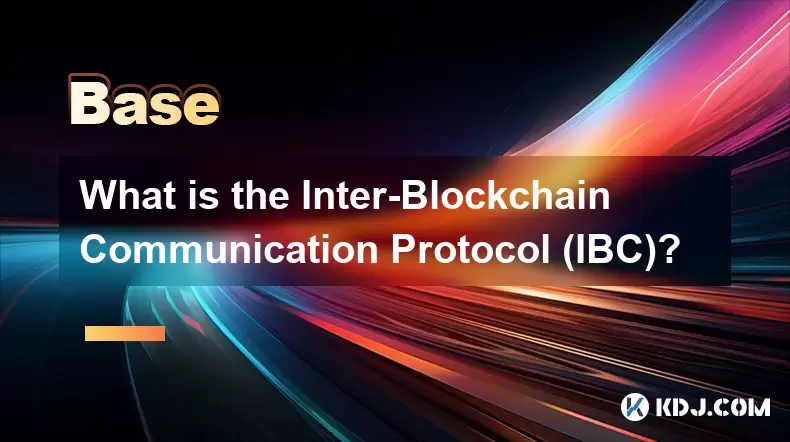
What is the Inter-Blockchain Communication Protocol (IBC)?
Jul 19,2025 at 10:43am
Understanding the Inter-Blockchain Communication Protocol (IBC)The Inter-Blockchain Communication Protocol (IBC) is a cross-chain communication protoc...
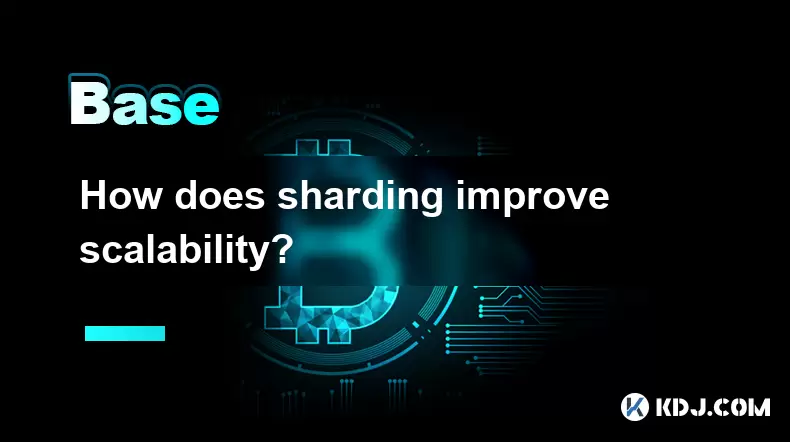
How does sharding improve scalability?
Jul 20,2025 at 01:21am
Understanding Sharding in BlockchainSharding is a database partitioning technique that is increasingly being adopted in blockchain technology to enhan...

What is the difference between CeFi and DeFi?
Jul 22,2025 at 12:28am
Understanding CeFi and DeFiIn the world of cryptocurrency, CeFi (Centralized Finance) and DeFi (Decentralized Finance) represent two distinct financia...

How to qualify for potential crypto airdrops?
Jul 23,2025 at 06:49am
Understanding What Crypto Airdrops AreCrypto airdrops refer to the distribution of free tokens or coins to a large number of wallet addresses, often u...

What is a crypto "airdrop farmer"?
Jul 24,2025 at 10:22pm
Understanding the Role of a Crypto 'Airdrop Farmer'A crypto 'airdrop farmer' refers to an individual who actively participates in cryptocurrency airdr...

What is the difference between a sidechain and a Layer 2?
Jul 20,2025 at 11:35pm
Understanding the Concept of SidechainsA sidechain is a separate blockchain that runs parallel to the main blockchain, typically the mainnet of a cryp...

What is the Inter-Blockchain Communication Protocol (IBC)?
Jul 19,2025 at 10:43am
Understanding the Inter-Blockchain Communication Protocol (IBC)The Inter-Blockchain Communication Protocol (IBC) is a cross-chain communication protoc...

How does sharding improve scalability?
Jul 20,2025 at 01:21am
Understanding Sharding in BlockchainSharding is a database partitioning technique that is increasingly being adopted in blockchain technology to enhan...
See all articles

























































































